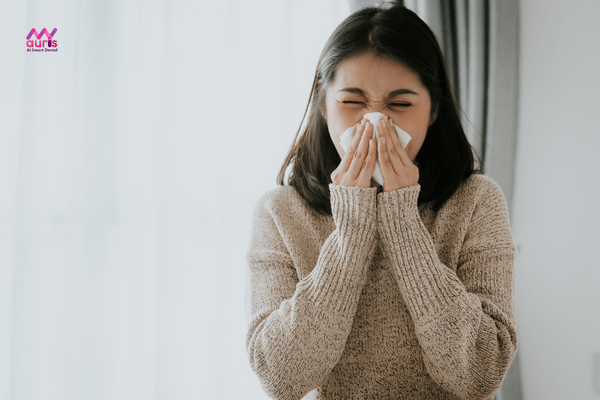Mumps is an acute infectious disease, caused by a virus. The disease is dangerous and causes long-term complications, especially for men. Therefore, recognizing the signs of mumps will help people detect and intervene for treatment early. From there, avoid spreading it to the community and avoid causing dangerous health complications. To know signs of mumps as well as information about the disease, follow the following article with My Auris.
What disease is mumps?
Mumps is an acute infectious disease caused by the mumps virus called Mumps virus. This is a virus belonging to the genus Rubulavirus, family Paramyxoviridae. This virus is often spread through coughing, sneezing or contact with saliva from someone infected with the virus.
According to global disease statistics, the rate of mumps is high in densely populated areas, where the climate is often cool or cold, areas with a low standard of living,…
The death rate due to mumps is very low, however the rate of dangerous complications is high such as encephalitis, meningitis or polyglanditis.

Causes of mumps
Before learning about the signs of mumps, people should know the cause of mumps so they can quickly recognize and differentiate.
Mumps is present worldwide and the disease does not occur in animals but only in humans. From children, teenagers to adults, everyone can get the disease. The cause of the disease is the mumps virus (Mumps virus), which belongs to the Paramyxoviridae family. This virus can live and exist for a long time outside the body, about 30-60 days at temperatures ranging from 15-200 degrees Celsius. And this bacteria is quickly destroyed at temperatures above 560 degrees Celsius or under the influence of antibacterial chemicals.
The disease is spread from person to person through the respiratory tract and the most contagious time is 2 days before symptoms appear or 6 days after symptoms disappear. Healthy people are infected through saliva or nasopharyngeal secretions containing the virus when the sick person sneezes, coughs, talks, spits, etc.

Signs of mumps
Recognizing the signs of mumps will help people take timely intervention and treatment measures before the disease becomes too severe. Thereby, avoiding dangerous complications that threaten life and body health.
Normally, signs of mumps usually appear after 2-3 weeks from the time of viral infection and gradually decrease in the following weeks. When suffering from mumps, the patient can recognize the typical sign of mumps as one or both sides of the parotid salivary gland being swollen and painful. In some severe cases, the swelling and pain reach the lower jaw bone ears.
Signs of mumps go through 4 stages as follows:
Incubation period: usually lasts from 14-24 days, with almost no symptoms clinical symptoms appear in the patient.
Onset phase with sudden symptoms such as:
- Loss of appetite, loss of appetite, body weakness
- Fever but not high, does not cause chills
- Pain in the lower corner of the jaw
- The parotid gland gradually swells and becomes painful
- The body is tired.
The full-blown stage of mumps is after:
- Swelling and pain on one side of the parotid gland then gradually spreading to the opposite side and other salivary glands.
- High fever of 39-40 degrees Celsius in the first 3 days of the disease, the most common cases are meningitis and orchitis.
- Loss of appetite, headache, difficulty speaking, difficulty swallowing, abdominal pain

Recovery phase:
One week after the onset of mumps signs of the full-blown stage, the symptoms of pain, parotid gland swelling, sore throat, headache, and difficulty swallowing also gradually decrease and gradually disappear. In cases where mumps signs appear outside the salivary glands, the nervous system will be damaged with the following phenomena:
- Encephalitis: the patient shows signs of chills, high fever, sometimes chills, vomiting, headache, abdominal pain. For men, the testicles are hard, painful, swollen, and the skin of the scrotum is red.
- Meningitis: with symptoms such as headache, high fever, vomiting, behavioral disorders, stiff neck, convulsions.
- Acute pancreatitis: usually has no symptoms, if severe, will form pseudocysts with symptoms of vomiting, abdominal wall pain, high fever, vascular collapse,…
Complications of quai_bi
If the signs of mumps are not recognized early and treated properly, it will cause many dangerous complications. Among them, the most common is:
- Orchitis: the biggest concern is testicular atrophy leading to infertility.
- Ovarian inflammation: women will experience abdominal pain and menorrhagia. If you are infected in the first 3 months of pregnancy, the rate of premature birth or stillbirth is high.
- Pulmonary infarction
- Acute pancreatitis
- Myocarditis
- Encephalitis, meningitis
How to prevent mumps
Mumps is considered a benign disease but it causes many dangerous and serious health problems later on. In particular, there is still no specific treatment for the disease, so disease prevention is extremely important and is the most optimal solution to protect health.
To effectively prevent disease, people first need to raise awareness about disease prevention, understand the disease as well as its harmful effects. In particular, the sequelae affect reproductive health, especially in men, which can cause infertility.
Vaccination is one of the most optimal solutions in preventing mumps. Mumps vaccine can be used as early as 12 months of age. Currently, in Vietnam, the combined vaccine for measles – mumps – rubella is often used. Vaccines are being researchedSafe and highly effective, with up to 95% protection and long-lasting immunity.

In addition to vaccination, people should also do some of the following ways to prevent the disease:
- Clean personal hygiene regularly with antibacterial soap
- Gargle with salt water or specialized antibacterial solutions
- House areas need to be cleaned and ventilated
- Schools, companies, workplaces,… must also be cleaned regularly to prevent infectious diseases
- When there is a sick person, they should be isolated and disinfected immediately
- Wear a mask when going to crowded, public places
Through the information about signs of mumps shared in the article, hopefully everyone will gain more useful knowledge. From there, know how to prevent and improve awareness of personal hygiene and clean home.
Anh Thy





